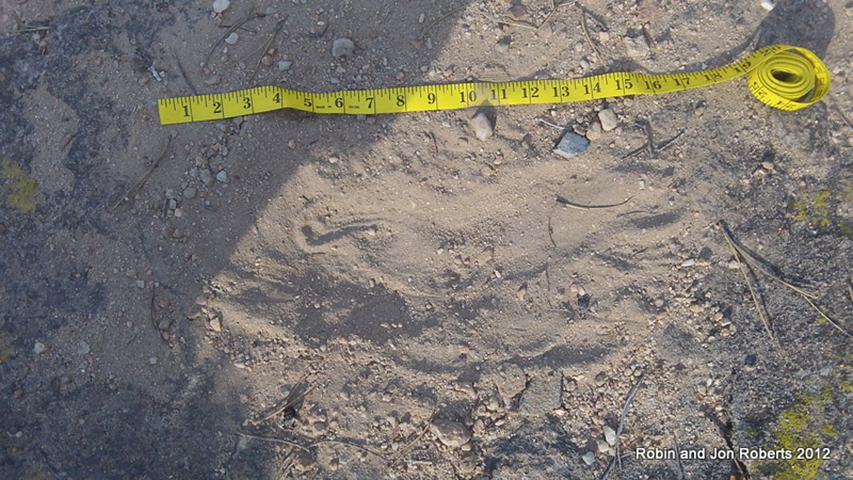What’s the BIG deal?
All across the world, people believe in a very large, humanoid creature who happens to be covered in dark hair from head to toe. It may sound like a bear but could it be Bigfoot?
In 1958, Gerald Crew claimed to have found a set of large footprints at a construction site where he worked in California. Crew allegedly had his friend make plaster casts of the prints and the story gained a lot of attention. After the death of Ray Wallace, his family stepped forward to say that Wallace was the one responsible for fabricating the prints found at the construction site- in other words, they were fake. However, this sparked the interest of several people. In 1967, the “Patterson-Gimlin Film” was released to the public. The film clip shows a tall, hairy figure walking upright through the forest and this seemed to be the proof everyone was looking for. Years later though, a man named Bob Heironimus claimed to have worn a costume for the video- so this was probably a hoax too. Despite these events being false and artificial, people all over the world really started to believe in a creature called Bigfoot, a creature that people still believe in today.
On Feb. 17-18, the 1st Annual Nebraska Bigfoot Conference took place in Hastings, NE. During this event, believers, skeptics, and non-believers too, all gathered to attend a series of presentations in which people attempted to prove the existence of Bigfoot. Among these presenters was Robin Roberts of Sasquatch Investigation of the Rockies (SIR), a research group based out of Colorado. Roberts has claimed to have seen, heard, smelled and interacted with Bigfoot while searching throughout Colorado with a fellow investigator, her rescue dog Roo.
“[Native Americans] say that they’re people but different. That’s probably about the best way to describe them,” said Roberts. “I think they’re more like a wild person.” While some investigators relate Bigfoot to the way a gorilla looks, Robert thinks they physically resemble bears more. “It’s that whole thing of them being upright. I don’t think they’re gorilla looking at all, but I see characteristics of it,” she said. One sighting she specifically recalls happened when she and her husband were breaking up camp after an investigation. “There’s this one spot at our campsite where I happened to get cell phone service so I was checking for messages from my staff. Something made me look up, and I saw [what I thought was] a lady with long brown hair,” Roberts said. “I noticed she was female, because she had the physical [characteristics of one].”
Roberts says although Bigfoot do not physically resemble great apes, they mentally do, as well as to humans. “I don’t think they’re as human as we are,” she said but she believes that they are some kind of hybrid. “They’ve been known to mock charge like a gorilla does. Chimpanzees break trees [like they do],” she said.
Evidence is very important among Bigfoot investigators, it is their key component in proving Bigfoot’s existence. Some of Robert’s evidence cannot be experienced by other people such what she’s heard and seen in the forest. Most of her evidence, however, is presented through photos of structures and footprints. Roberts believes Bigfoot uses trees to make structures for personal purposes. “The main reason I feel they do this is to communicate with each other effectively over large tracts of land without too much effort,” said Roberts on her blog. Randy Garlipp, a non-believer of Omaha, doesn’t understand why investigators automatically believe Bigfoot is what’s manipulating deformed trees. “Why could those not have been made by park goers, by people? Why do attribute them to Bigfoot?” he said. Garlipp actually thinks that most evidence of Bigfoot is probably evidence of one animal in particular. “Surprisingly enough, it just happens to be in most areas where they spot Bigfoot, and the logical thing is a bear,” he said. Garlipp has a theory about how Bigfoot footprints can be made accidentally by these animals. “If a bear walks and overlaps his paws, all of the sudden you’ve got a Bigfoot footprint,” he said.
Garlipp thinks that people often mistake other animals for Bigfoot because of the components surrounding their investigations. “When you get in the darkness, it could be anything,” he said. Garlipp said he often laughs when believers say they’ve seen a Bigfoot at a distance, “yet they can tell you every detail about it. If you only saw it for a brief instance, how can you fill in all these details? You fill them in with you imagination,” he said. Roberts said she finds herself being wary of other people’s stories sometimes too. “I’d rather believe a person than not,” she said. “I won’t tell someone that they’re wrong though, [because] it’s not my place. They were there and they experienced it, not me.”
“I tend to be a skeptic myself. Everything is not always Bigfoot, in fact, almost everything is not Bigfoot,” said Roberts. “With [other] skeptics, I just listen to them, I answer their questions the best I can, and if I don’t know, I tell them that honestly I don’t know. I just know that they’re there. I’m coming from a knowledge standpoint because I’ve seen them, so I think differently. I’m a knowledgeable skeptic.” Skeptics and believers alike, squatch out for the 2nd Annual Nebraska Bigfoot Conference, taking place February of next year, details are soon to come at bigfootcrossroads.org.

Haley McKain 2018
Co-Editor in Chief
A little bit about me
I cry all the time. Not always in a bad way or anything, but when I’m mad, sad, and especially...

